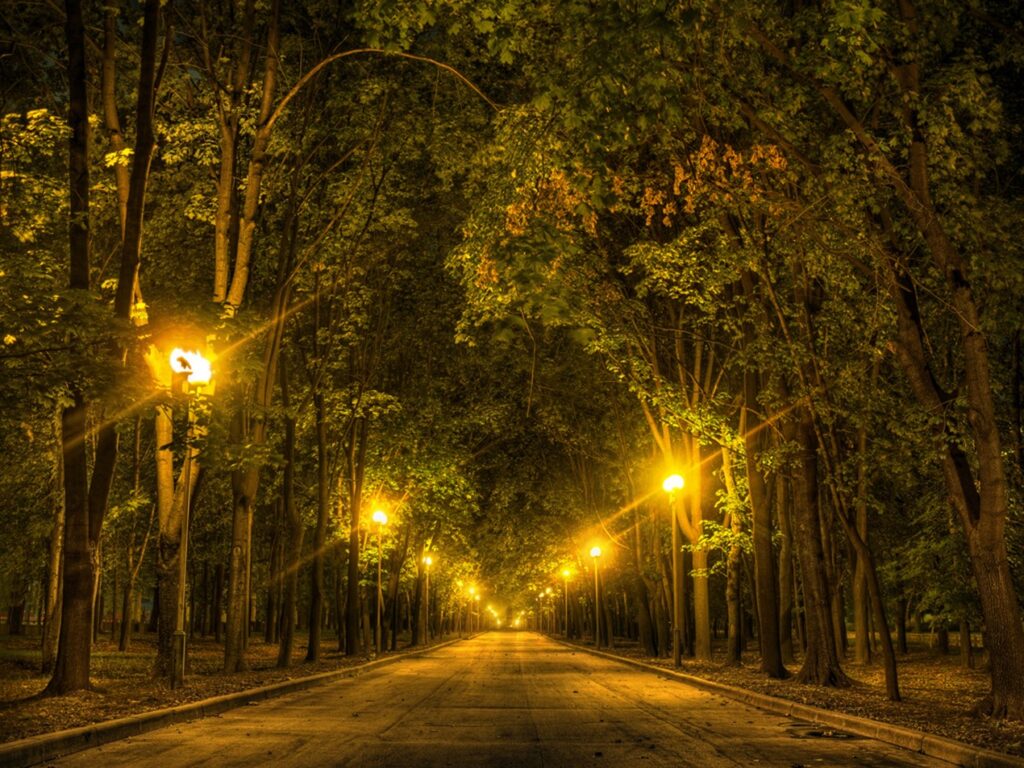Trees
Urban trees live with all kinds of stresses that their forest cousins do not – road salt, soil compaction, and lawn mower related-injuries to name a few. They are also subjected to a different light environment, one where it is never completely dark. Trees evolved with a regular, predictable transition from day to night, following the natural patterns of the sun and moon. They measure light with a kind of molecular clock, so that they know the length of the day, the season, and can also measure shadows to determine their distance to other trees. This information tells them when to carry out certain important processes, such as photosynthesis, the timing of spring budburst, leaf coloring, and the shedding of dead leaves. Artificial light confuses trees by extending the day length, which can change flowering patterns, and promote continued growth, preventing trees from developing dormancy that allows them to survive the rigors of winter weather.[1]

Plants
Insects
Mammals
Fish
Turtles
Birds
- “we advocate warm color temperature white light as nighttime illumination” – Health and Human Services USA (2018) – Light at night disrupts nocturnal rest and elevates glucocorticoids at cool color temperatures
- “Alters detection of day and night” – Exeter University (2013) – Measuring biological light pollution and uncovering its ecological effects
- “the significant impact that even low levels of nighttime light pollution can have” – Cambridge University (2013) – The ecological impacts of nighttime light pollution: a mechanistic appraisal
- “managers should avoid lights that have ultraviolet or blue light (shorter wavelengths)” – National Park Service (2017) – Artificial Night Lighting and Protected Lands
- “if the tendency to light more when light is cheaper can be overcome” – Luger Research (2018) – Hazard or Hope? LEDs and Wildlife
- “use lamps with the lowest CCT, melanopic response, or M/P value possible to achieve the goals of the lighting project.” – Illuminating Engineering Society (2020) – On the Use of Summary Metrics of Light Spectral Characteristics to Assess Effects of Artificial Light at Night on Wildlife
- “exacerbate existing domestic, e.g., midge swarms and industrial infestations of sanitary and phytosanitary pests” – Ecological Society of America (2014) – LED lighting increases the ecological impact of light pollution irrespective of color temperature
- “Anthropogenic lighting drastically alters nocturnal environments, threatening a wide range of species” – Colorado State University (2018) – Anthropogenic light disrupts natural light cycles in critical conservation areas
- “bombarded with numerous novel stimuli in their environment that could lead to grave consequences.” – Journal of Ecology (2018) – Connecting spectral radiometry of anthropogenic light sources to the visual ecology of organisms
- “ALAN reduces habitat suitability” – El Sevier (2020) – Effects of artificial light at night on the foraging behavior of an endangered nocturnal mammal
- “Light pollution can have significant conservation consequences for a threatened bat species” – Current Biology (2009) – Street Lighting Disturbs Commuting Bats
- “Technological innovations and changes in lighting strategies should consider benefits for reductions in greenhouse gases and energy consumption in parallel with their potential ecological impacts” – Global Change Biology (2012) – Conserving energy at a cost to biodiversity? Impacts of LED lighting on bats
- “The most immediate threat from anthropogenic noise and light is the loss of species” – Trends in Ecology & Evolution (2015) – A framework to assess evolutionary responses to anthropogenic light and sound
- “When the installation was illuminated, birds aggregated in high densities, decreased flight speeds, followed circular flight paths, and vocalized frequently” – Proceedings of the National Academy of Sciences (2017) – High-intensity urban light installation dramatically alters nocturnal bird migration
- https://www.floridamuseum.ufl.edu/science/bright-light-bars-big-eyed-birds/
- https://onlinelibrary.wiley.com/doi/10.1111/ecog.05251?fbclid=IwAR2PXSehGAxijrBFL9P4KIQUKqrw1UT6Qi_pxl3ldcWSlwFMttd9xF1nBVg
- http://cescos.fau.edu/observatory/lightpol-Plants.html
[1] https://www.deeproot.com/blog/blog-entries/hit-the-lights-light-pollutions-negative-impact-on-urban-trees